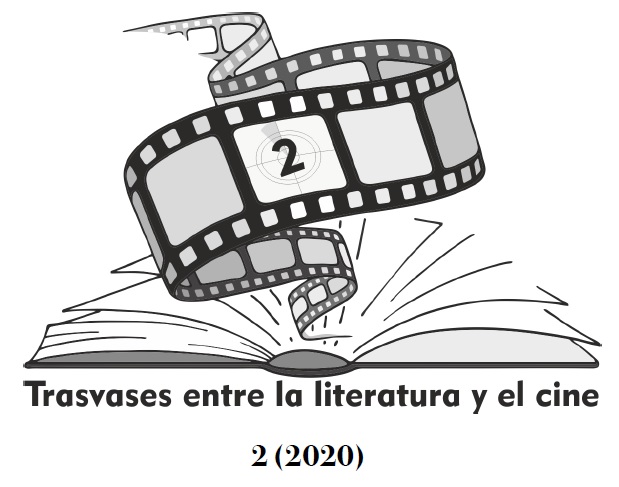Àngel Guimerà in Japanese Film: Cross-Cultural Intertextuality in Kenji Mizoguchi’s Adaptation of the play Terra Baixa
DOI:
https://doi.org/10.24310/Trasvasestlc.vi2.9037Keywords:
intertextuality, intercultural adaptation, Kenji Mizoguchi, Àngel Guimerá, Catalan, theater, Japanese cinemaAbstract
At the dawn of Japanese cinema, especially in the 1910s and 1920s, many movies were adapted from the Western novels. Kenji Mizoguchi made several of such adaptations, including his 1924 film Jinky? (This Dusty World), adapted from Terra baixa (Martha of the Lowlands), a drama by Àngel Guimerà. While the film in question has been lost, its stills and reviews of film magazines published at the time of screening have been archived. This paper draws on such materials and analyzes intercultural aspects of Mizoguchi’s adaptation. It provides a brief overview on the reception of Guimerà’s work. It also analyzes the process through which Mizoguchi adapted the play to the Japanese context. Finally, it offers insights on how the historical-social context and the cultural tradition influenced the director’s adaptation process.
Downloads
Metrics
Publication Facts
Reviewer profiles N/A
Author statements
Indexed in
-
—
- Academic society
- N/A
- Publisher
- Universidad de Málaga
References
ABE, Chikara (2003), Impurity and Death: A Japanese Perspective, Boca Raton, Universal Publishers.
ANDERSON, Joseph (1992), «Spoken Silent in the Japanese Cinema; or, Talking to Pictures: Essaying the Katsuben, Contextualizing the Texts», en A. Nolletti y D. Desser (eds.), Reframing Japanese Cinema: Authorship, Genre, History, Bloomington, Indiana University Press, págs. 259-310.
FURUKAWA, Roppa (1924), «Jinky?», Kinema Junp?, 160, pág.10.
GALLÉN, Enric (2012), «Guimerà a Europa i Amèrica», Catalan Historical Review, 5, págs. 85-100.
GEROW, Aaron (2008), A Page of Madness: Cinema and Modernity in 1920s Japan, Michigan, Center for Japanese Studies, The University of Michigan Press.
GOODWIN, James (1994), Akira Kurosawa and Intertextual Cinema, Baltimore, Johns Hopkins University Press.
GUIMERÀ, Àngel (1897), Terra Baixa, Barcelona, Butxaca 62.
ISHIKIDA, Miki (2005), Living Together: Minority People and Disadvantaged Groups in Japan, Bloomington, iUniverse.
KNIGHT, John (1997), «On the extinction of the Japanese wolf», Asian Folklore Studies, 56, págs. 129-159. KOMATSU, Hiroshi (1992), «Some Characteristics of Japanese Cinema before World War I», en Arthur Nolletti y David Desser (eds.), Reframing Japanese Cinema: Authorship, Genre, History, Bloomington, Indiana University Press, págs. 229-258.
KOMATSU, Kazuhiko (2017), An Introduction to Y?kai Culture: Monsters, Ghosts, and Outsiders in Japanese History, Tokio, Japan Library.
KOND?, Keiichi (1929) (ed.), Eiga sut? zensh? [Guía completa de las estrellas de cine], vol. 1, Tokio, Heibon sha.
LOTHAR, Rudolf (1903), Tiefland (libreto) [En línea: http://kareol.es/obras/tiefland/tiefland.htm. Fecha de consulta: 10/12/2019]. OSANAI, Kaoru (1929 [1916]), Jinky?, en Obras completas. 5, Tokyo, Shin’ya, págs. 586- 635.
POULTON, M. Cody (2010), A Beggar’s Art: Scripting Modernity in Japanese Drama, 1900-1930, Honolulu, University of Hawai’i Press.
RICHIE, Donald (2012), A hundred years of Japanese film: A Concise History, with a Selective Guide to DVDs and Videos, Tokio, Kodansha International.
SAT?, Tadao (2008), Mizoguchi and the Art of Japanese Film, Oxford/New York, Berg.
STAM, Robert (2000), «Beyond Fidelity: The Dialogics of Adaptation», en J. Naremore (ed.), Film Adaptation, New Brunswick, Rutgers University Press, págs. 54-76.
WADA-MARCIANO, Mitsuyo (2008), Nippon modern: Japanese Cinema of the 1920s and 1930s, Honolulu, University of Hawaii Press.
Downloads
Published
How to Cite
Issue
Section
License
All authors published in this journal accept the following copyright terms:
a. Authors retain their authors´ rights (copyright) and grant First Publication Rights to the journal, which whill be published under a the Creative Commons Attribution-NonCommercial-ShareAlike 4.0 International (CC BY-NC-SA 4.0) license. All about this license is available in the following link: <http://creativecommons.org/licenses/by-nc-sa/4.0>
b. Authors may separately establish additional agreements for the non-exclusive distribution of the version of the work published in the journal (e.g. including it in an institutional repository, or publishing it in a book) with an acknowledgement of its initial publication in this journal.
c. Authors are allowed and encouraged to disseminate their work electronically (e.g. in institutional repositories or on their own website) as this can lead to productive exchanges, as well as earlier and more extensive citation of published work.
The author is responsible for obtaining permission from the copyright holder when using copyrighted materials.
This electronic journal is published by University of Málaga (UmaEditorial), thus it is necessary to cite the origin of any partial or total reproduction.








22.png)










